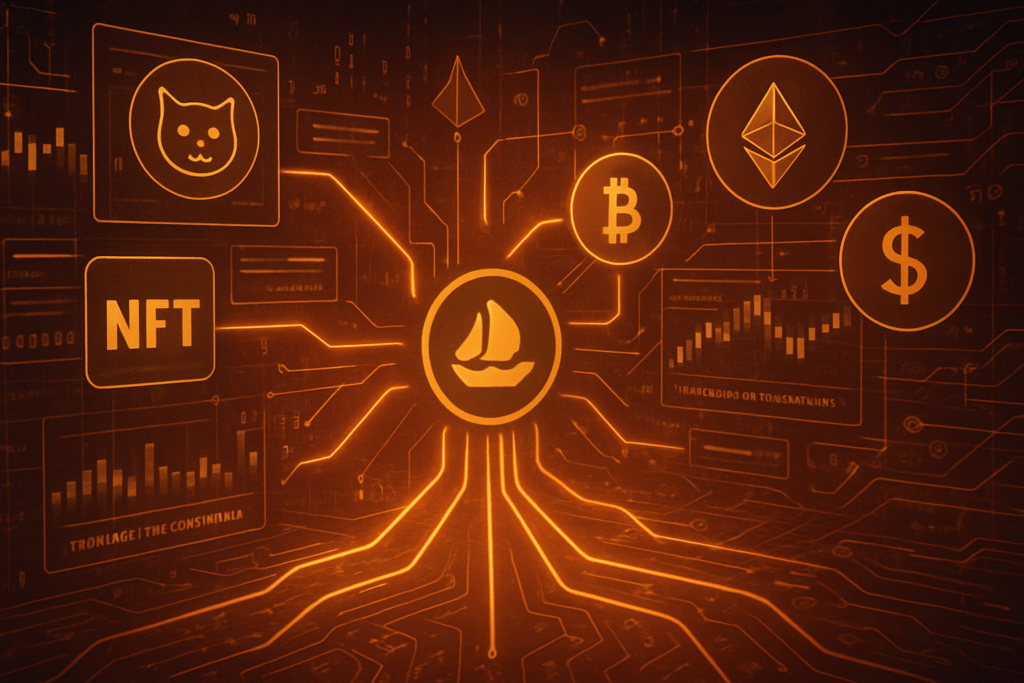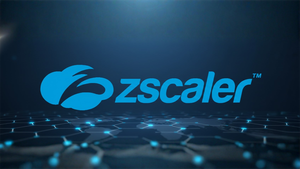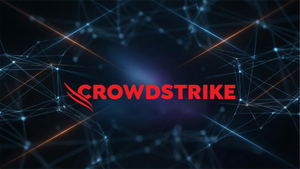
October 17, 2025 – In a monumental strategic pivot, OpenSea, once the undisputed titan of the Non-Fungible Token (NFT) market, has officially transformed into a comprehensive multi-chain crypto trading hub. Following the dramatic decline of the NFT boom, the platform has aggressively expanded its offerings, allowing users to seamlessly swap NFTs, memecoins, and other fungible tokens across an impressive 22 different blockchains. This significant shift, cemented with the launch of its OS2 platform and the highly anticipated introduction of its native $SEA token, marks a crucial turning point for OpenSea and the broader Web3 ecosystem.
The announcement and subsequent rollout of OpenSea’s new aggregation model in October 2025 have already sent ripples through the crypto world. Early market reactions indicate a surge in trading activity, with OpenSea facilitating billions in cryptocurrency trades and hundreds of millions in NFT transactions within the first two weeks of the month. This bold move is a clear response to the evolving demands of the digital asset landscape and a direct challenge to emerging competitors, signaling OpenSea's intent to become the ultimate "Web3 home" for all digital asset interactions.
Market Impact and Price Action
OpenSea's pivot has catalyzed a notable resurgence in its platform activity and had a mixed, yet largely positive, impact on the broader digital asset markets. In the first two weeks of October 2025, OpenSea facilitated an astounding $1.6 billion in cryptocurrency trades and an additional $230 million in NFT transactions, marking its highest monthly trading volume in over three years. This surge underscores the immediate traction of its multi-chain aggregation model.
The broader NFT market, which had experienced a sharp dip in early October 2025 with total market capitalization falling from $6.2 billion to $5 billion due to external macroeconomic pressures (like a U.S.-China trade tariff shock), showed remarkable resilience. Within days, the market recovered approximately 10% of its value, settling between $5.4 billion and $5.5 billion. This rapid rebound, coinciding with OpenSea's aggressive strategy and a generally strong performance from Bitcoin, injected cautious optimism into investors. Blue-chip NFT collections, such as CryptoPunks, Bored Ape Yacht Club (BAYC), and Pudgy Penguins, have shown renewed prominence, with PFP (Profile Picture) collections experiencing a 187% quarter-over-quarter rise in trading volume. Notably, Pudgy Penguins' market value surpassed that of BAYC, with its floor price increasing by 539% since launch.
OpenSea's model of aggregating liquidity from various decentralized exchanges (DEXs) like Uniswap and Meteora across its 22 supported blockchains aims to enhance liquidity for both fungible tokens and NFTs. The upcoming Token Generation Event (TGE) for OpenSea's native $SEA token, scheduled for October 2025, has significantly incentivized user activity, with anticipation of a short-term price spike upon launch. However, the token's sustained value will hinge on its long-term utility within the OpenSea ecosystem, including governance, discounted trading fees, and staking. This "trading-is-mining" incentive model mirrors strategies successfully employed by competitors like Blur, which previously eroded OpenSea's market dominance by offering token rewards for trading.
Community and Ecosystem Response
The Web3 community has met OpenSea's multi-chain aggregation pivot with a dynamic blend of cautious optimism and active engagement throughout October 2025. Following an initial market dip, the NFT market's swift recovery helped solidify belief in the sector's long-term viability, fostering a more positive narrative around OpenSea's ambitious expansion. A significant driver of community discussion has been the impending launch of OpenSea's native $SEA token, with its "Treasure Chests" rewards program, which concluded on October 15, 2025, heavily incentivizing users to link Ethereum Virtual Machine (EVM) wallets for eligibility in the anticipated airdrop. This campaign sparked considerable excitement, with users actively strategizing to maximize their potential rewards.
However, community discussions also reflected some debate, particularly concerning the criteria for airdrop eligibility – whether to prioritize historical users or current engagement. The platform's decision to increase transaction fees (to 1% for NFTs and 0.85% for tokens) to fund the reward pool has also been a point of contention, balancing increased user costs against potential token returns. Crypto influencers and thought leaders have largely welcomed OpenSea's pivot as a sign of market maturation, emphasizing the growing importance of utility, sustainable projects, and deeper integration of NFTs into broader Web3 ecosystems. OpenSea's acquisition of mobile wallet company Rally in July 2025 and its vision to build an "onchain everything app" with cross-chain and AI features are seen as strategic moves aligning with this evolving narrative.
The effects on related DeFi protocols, NFT projects, and Web3 applications have been notable. NFT projects have experienced a significant rebound in transaction counts, with OpenSea's rewards campaign playing a crucial role in stimulating activity. Blue-chip NFT collections have regained prominence, indicating renewed investor confidence. In DeFi, OpenSea's integration with decentralized exchanges like Uniswap and Meteora enhances its offerings, while the introduction of "NFT Strategy tokens" combines NFTs with DeFi principles for automated trading strategies. For the broader Web3 landscape, OpenSea's vision to become a comprehensive "Web3 home" that enables easy trading of any asset across various chains and wallets is seen as critical for fostering widespread adoption, simplifying the user experience and providing a tangible mechanism for digital ownership.
What's Next for Crypto
OpenSea's strategic pivot in October 2025 is not merely a change in business model; it's a significant indicator of the crypto market's maturation and evolving demands. In the short term, the market can expect continued high liquidity and trading volumes on OpenSea, driven by its multi-chain aggregation and the impending $SEA token launch. The enhanced trading flexibility across 22 blockchains will likely attract a broader user base, intensifying competition among existing NFT marketplaces and decentralized exchanges. The resurgence of interest in blue-chip NFTs, fueled by OpenSea's gamified incentives and AI-powered tools, could also continue.
Long-term, this move is poised to fundamentally reshape the crypto and NFT ecosystems. OpenSea's abstraction of underlying blockchain complexities will facilitate a more seamless and interconnected Web3 experience, crucial for mainstream NFT adoption in gaming, DeFi, and the metaverse. This pivot supports a shift towards utility-driven NFTs, fostering a more sustainable market. Increased cross-chain interoperability will drive the development of essential infrastructure like bridges and protocols, breaking down existing blockchain "silos." Digital asset valuations may become more stable, influenced by functionality and reach across diverse ecosystems.
Several catalysts and developments bear watching. The successful launch and utility of the $SEA token, offering governance, fee discounts, and staking, will be paramount for sustained user engagement. Further advancements in AI integration, as seen in OpenSea's OS2 platform, could significantly enhance user experience and market dynamics. Regulatory clarity globally, especially concerning NFTs as potential securities, will shape market confidence. Continued innovation in interoperability protocols and growing institutional adoption of utility-driven NFTs could bring substantial capital and stability. OpenSea's planned new mobile app, designed for intuitive, self-custodial cross-chain trading, also holds significant potential to lower entry barriers and expand market reach. For projects, embracing multi-chain compatibility and focusing on utility are now strategic imperatives. Investors should diversify across chains and asset types, prioritize projects with strong fundamentals, and closely monitor OpenSea's ecosystem and the evolving regulatory landscape.
Bottom Line
OpenSea's bold transformation into a multi-chain crypto trading aggregator in October 2025 marks a pivotal moment for the digital asset space. For crypto investors and enthusiasts, the key takeaway is the platform's expanded capabilities, offering seamless trading of NFTs, memecoins, and fungible tokens across 22 blockchains. The impending $SEA token launch, with its associated incentives and airdrop programs (for which EVM wallet linking by October 15, 2025, was crucial), is a central component of this strategy, aiming to reward active users and foster a vibrant ecosystem. OpenSea's revised fee structure, with a portion channeled into reward pools, further underscores its commitment to user engagement.
The long-term significance of this pivot cannot be overstated. By diversifying beyond its NFT-centric origins, OpenSea aims to achieve greater stability and reclaim market leadership against fierce competition. Its multi-chain aggregation directly addresses the fragmentation plaguing the crypto ecosystem, promising a more unified and accessible Web3 experience. This move is also a strategic play in the regulatory landscape, with the OpenSea Foundation positioning the $SEA token as a utility token to mitigate scrutiny. Ultimately, OpenSea's efforts to simplify cross-chain interactions and cater to a broader range of digital assets are poised to significantly boost crypto adoption, making the Web3 world more intuitive and approachable for a wider audience. The vision of OpenSea as a "Web3 home" where any asset can be traded across any chain or wallet, regardless of user experience, speaks volumes about its ambition to drive mainstream integration.
Important dates and metrics to monitor include the post-airdrop performance and utility of the $SEA token, the growth in active users and overall trading volume on the OS2 platform, and OpenSea's evolving market share in both NFT and broader crypto aggregation. The effectiveness of its AI-powered tools, the continuous expansion of its blockchain support, and any further developments in the global regulatory environment for digital assets will also be crucial indicators of its long-term success and impact on crypto adoption.
This article is for informational purposes only and does not constitute financial or investment advice. Cryptocurrency investments carry significant risk.





